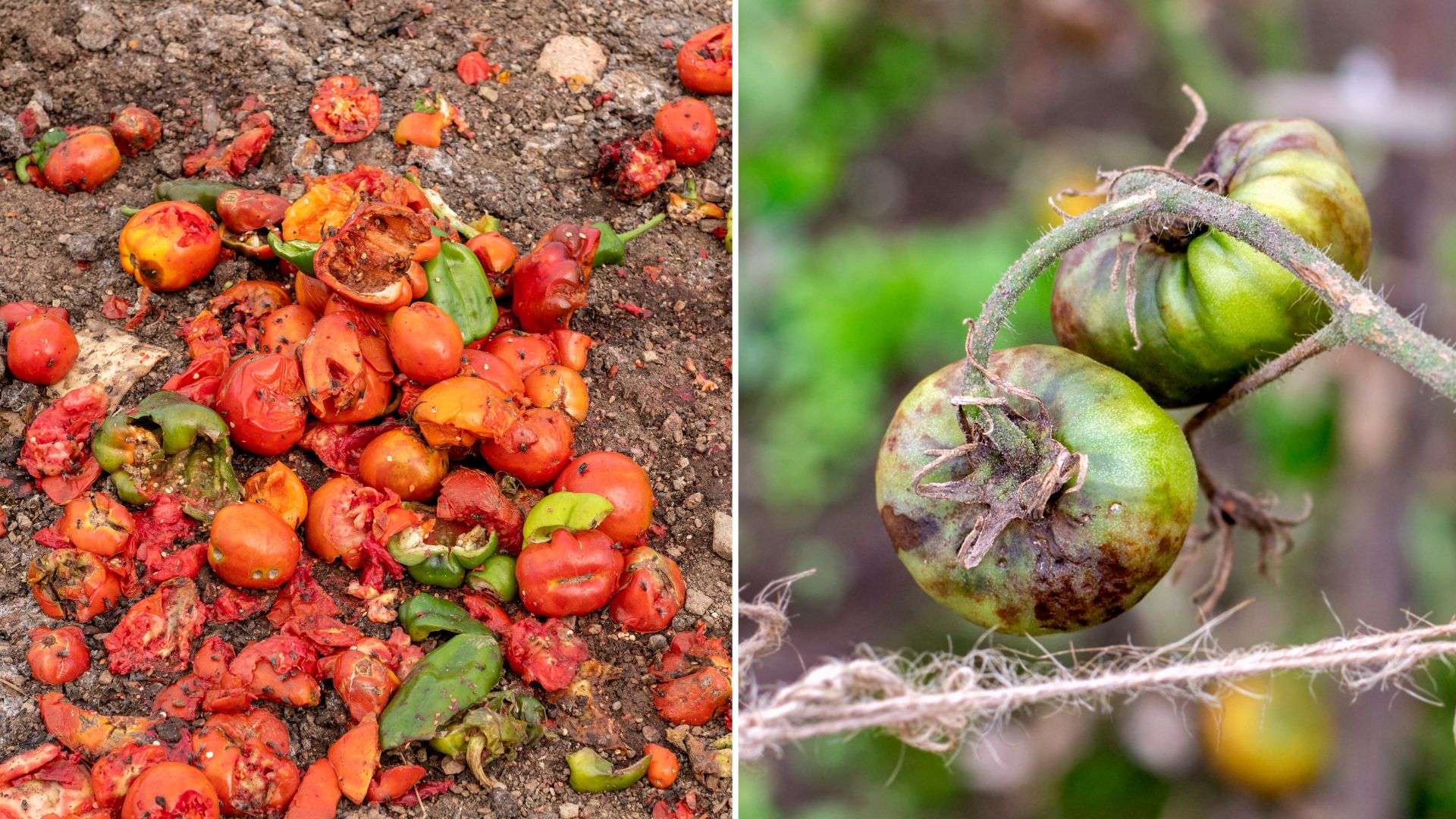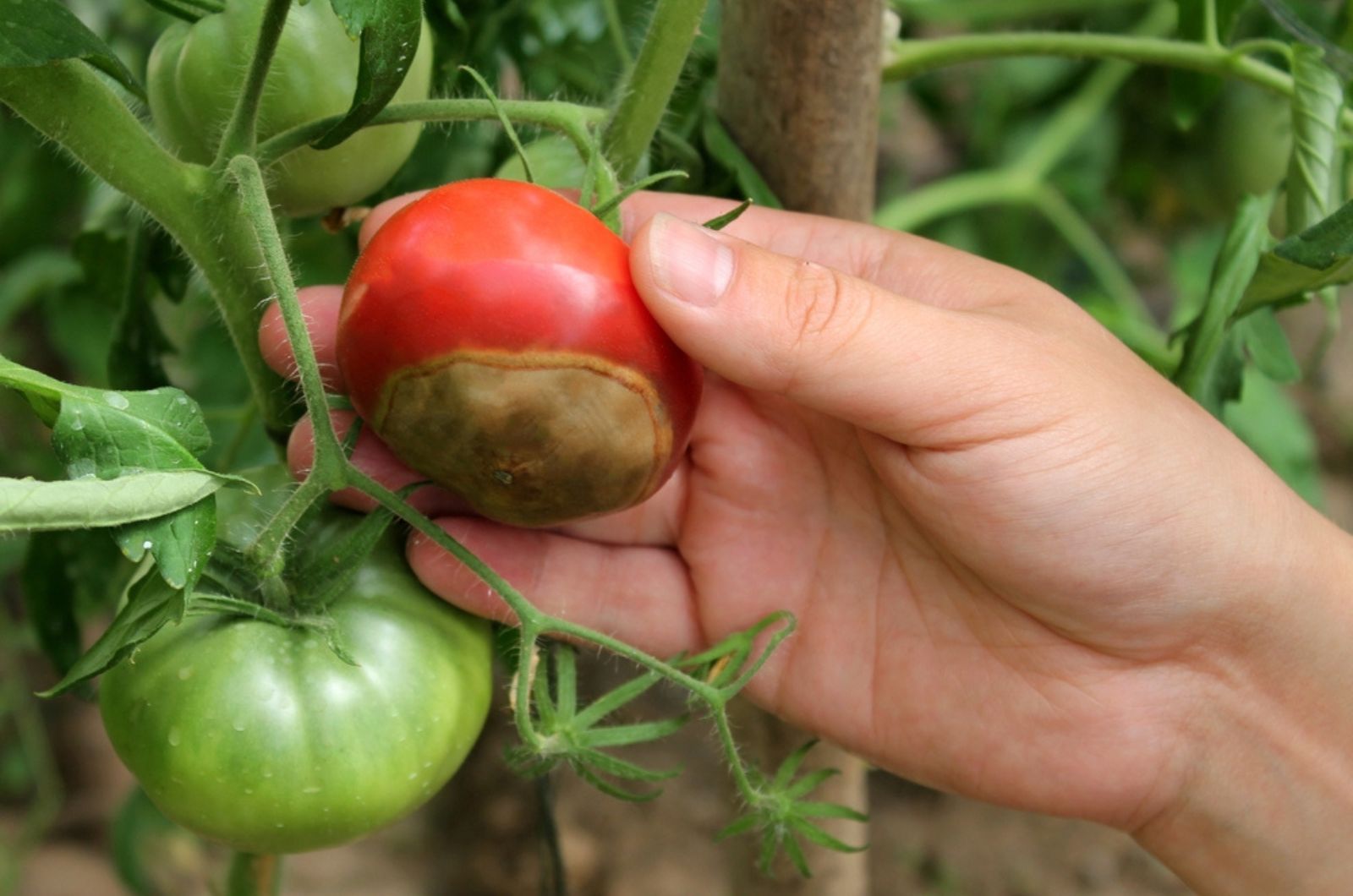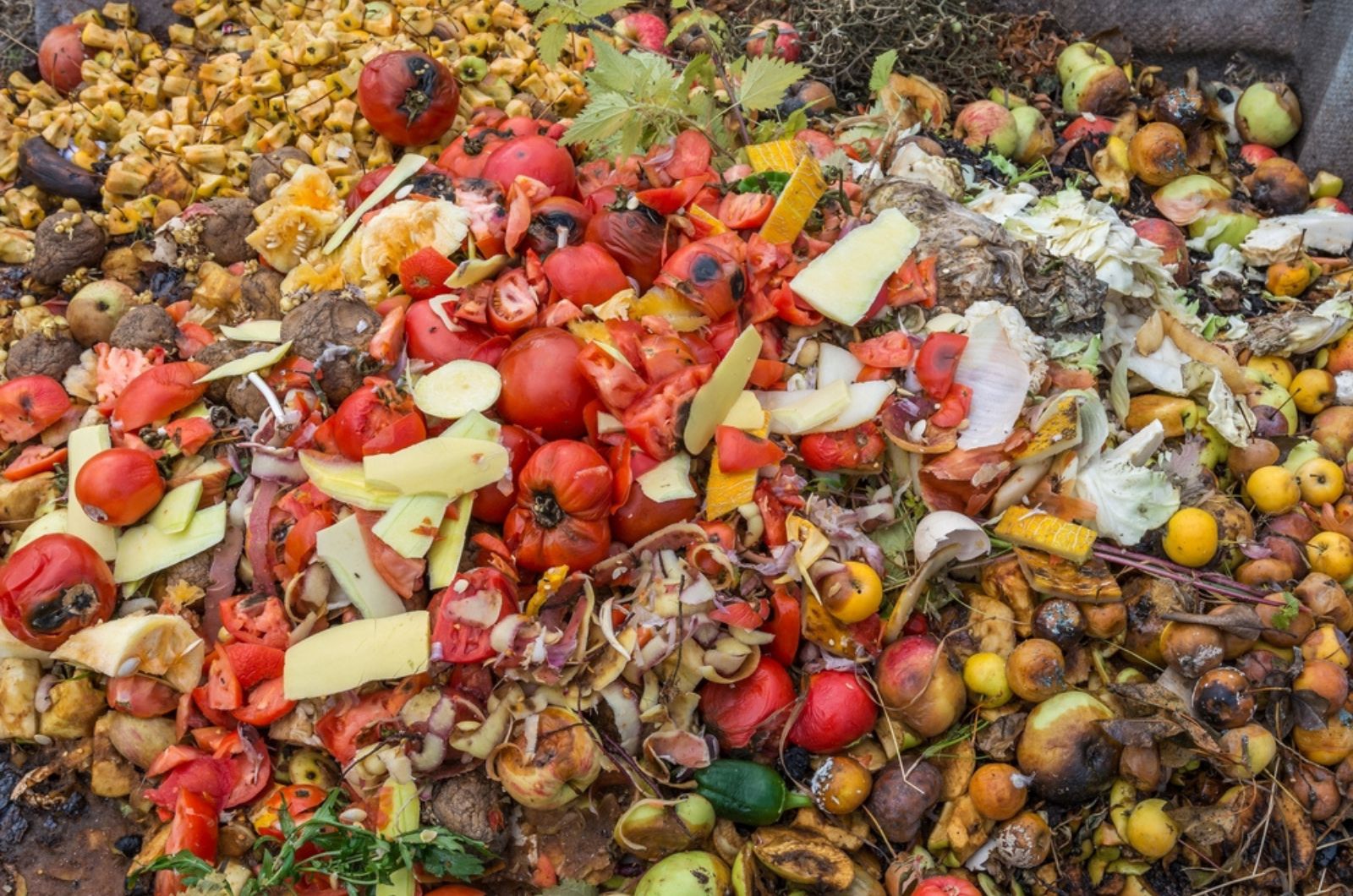Believe it or not, disposing of vegetables that die off has an important role in keeping your garden healthy and thriving.
It does contribute to the overall neat and tidy appearance, but removing tomato plants (and other veggies) after they die off will also prevent diseases and pests overtaking your yard.
How? Find out below!
Why Dispose Of Tomato Plants?
Leaving rotting tomato plants in the ground creates a host of future issues. They become a breeding ground for fungi which cause mold, mildew, blight, and other infections.
Not only will these plants become infected and unsuitable for compost, but also the surrounding soil. That means that whatever you plant the following year will be at risk of suffering from some fungal infection.
This is especially the case when it comes to blight, spores of which can survive for one or two years in the soil. (1)
Furthermore, decaying tomato plants can also provide food and shelter for pests to overwinter, and they will wreak havoc all over your garden as soon as the weather warms up.
Aphids, nematodes, tomato hornworms, and a host of other pests love to feed on the decaying fruits and foliage. What’s worse is that they usually lay eggs which overwinter as pupae and destroy the next year’s crops.
How To Get Rid Of Them
As you can see, it is crucial to dispose of dying tomato plants, but you have to be careful once you do it.
That means not placing any rotting fruits, leaves, or other decaying plant matter onto your compost heap.
But why not? Isn’t that what you’re supposed to do once you uproot the spent vegetable plants?
Well, yes – for most plants. In fact, you can even compost your tomato plants if you maintain the compost temperature between 131-170°F.
However, tomato plants are more likely to harbor certain diseases – blight in particular – so you should be very careful when composting them. You’ll have to get your compost extremely hot for a long period of time to kill any pathogens.
If you can’t achieve this, it’s best to inspect all your plants for any signs of fungal diseases, and don’t throw them onto your compost pile if you notice anything suspicious.
That’s because the finished compost will transfer those pathogens onto your other plants, infecting them before they even get a chance to start their growing season.
And the same goes for rotten tomato fruits. Their seeds might find fertile ground in your compost and grow into new plants. That might not seem like a bad idea at first, but once those tomatoes start suffocating your other vegetables, you’ll start seeing them as a weed.
The heat in the compost doesn’t usually harm the seeds, and you’ll get many volunteers – plants that sprout on their own – throughout your garden.
3 Ways To Dispose Of Tomato Plants And Fruits
So, what do you do with tomato plants if you can’t throw them onto your compost heap?
The first thing is to keep them as far away from your garden as possible. And yet, throwing them in your trash is such a waste because recycling kitchen scraps is better than throwing them away; it’s better for the climate and the environment.
Here are the three options you have: the trench and bury method, sending the decaying tomato plants to your local or commercial composting center, or burning them.
1. Trench And Bury
You might wonder why I’m talking about the trench and bury method when I just said that composting tomatoes isn’t the best choice.
Well, that’s because you wouldn’t bury these plants in your garden, but some place else, such as anywhere near trees that will love the additional nutrient boost.
This method is perfect for composting any plant because you don’t require a composting pile. You simply dig a deep hole (or a trench) and bury the composting material in it.
It will decompose over time, enriching the soil and surrounding plants with minerals.
Of course, it goes without saying that you shouldn’t do this with any diseased plants. You’ll be much better off sending those to your community composting center or burning them.
2. Composting Center
So, how come you can send diseased plants to your local composting center but you can’t compost them yourself?
In these facilities, composting piles generate enough heat to kill off any spores and seeds, making it safe to use. (2) That’s something you can’t achieve in your composting bin.
Of course, if you have any other composting materials, such as leaves, twigs, and other yard waste, but lack the composting pile, you can send those to your local or municipal composting facility as well.
Just make sure that everything is placed into appropriate compostable garden waste bags. That way, you won’t create more waste that goes to the landfill and increases the emission of greenhouse gasses.
3. Burning
Finally, your last option is to burn the infected plants if your local regulations allow it. Fire can kill any spores and seeds, making them highly unlikely to infest your yard.
You can even use those ashes in your garden, or you could just throw them away. It is really up to you and whether you want to play it safe or utilize the end product.
You can use it in your container garden and see how your plants react. That way, you’re not risking your entire garden getting infected. Just make sure to keep those guinea-pig plants away from your other greenery and veggies.
But whatever you do, just remember to uproot those tomato plants once they die off and dispose of them any way you see fit.
References:
1. My Tomato Plants All Got Early Blight; Will My Soil Be Safe to Use again Next Spring? (2020). UMaine Cooperative Extension: Garden and Yard.
2. Proper Disposal for Blighted Tomato and Potato Plants (2009). City of Madison.



